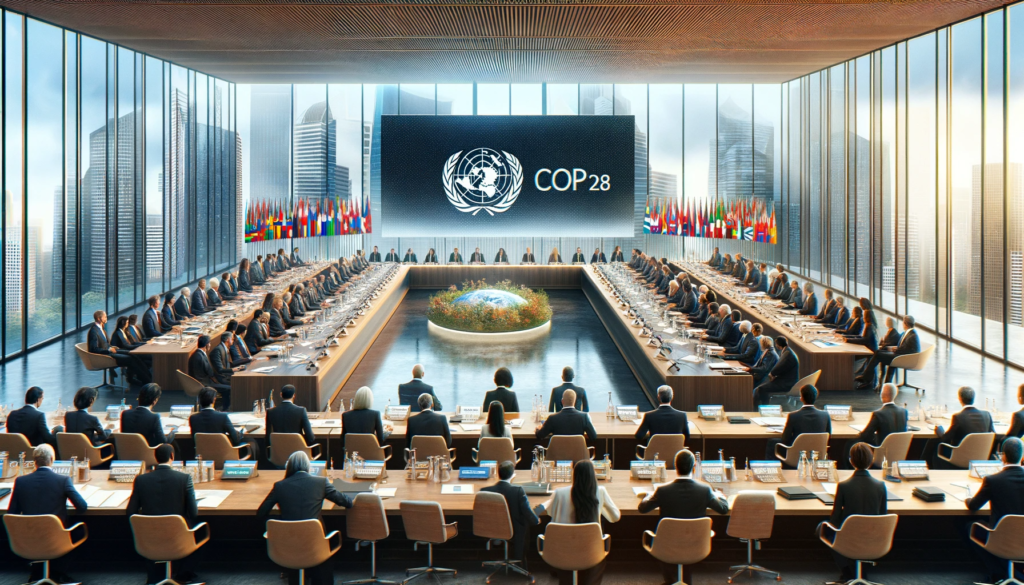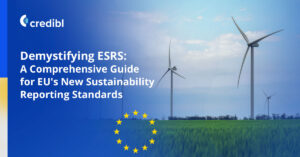Introduction: COP28’s Loss and Damage Fund
The 28th Conference of the Parties (COP28) to the United Nations Framework Convention on Climate Change (UNFCCC) marked a pivotal moment in the ongoing global dialogue on climate change. Central to the discussions at COP28 was the establishment of the Loss and Damage Fund.
This long-debated concept has finally come to fruition, representing a significant breakthrough in international climate negotiations. The fund acknowledges the need for financial support to countries most affected by the catastrophic consequences of climate change.
Background Concept of the Loss and Damage
The concept of ‘loss and damage’ associated with climate change has a complex and evolving history within global climate discussions. Initially emerging in the early 1990s, it was brought to the forefront by small island developing states (SIDs) and other vulnerable nations facing existential threats due to rising sea levels and extreme weather events. These countries argued for recognizing loss and damage as a distinct issue, separate from climate change mitigation and adaptation.
Over the years, the loss and damage debate has centered around the recognition that even robust mitigation and adaptation efforts cannot prevent some impacts of climate change, leading to irreversible losses. The concept gained formal recognition in 2013 with the establishment of the Warsaw International Mechanism for Loss and Damage at COP19, laying the groundwork for future action.
However, it was not until COP28 that concrete steps were taken towards the practical implementation of this concept. The persistent advocacy by vulnerable nations and growing global acknowledgment of the uneven impacts of climate change led to the historic decision at COP28. The establishment of the Loss and Damage Fund marks a significant shift from acknowledgment to action, providing a pathway for compensating those most affected by climate change but who have contributed least to its causes.
Breakthrough at COP28: A Step Toward Climate Justice
COP28, held in Abu Dhabi, United Arab Emirates, marked a historic turning point in the fight against climate change. After years of negotiations and resistance from developed nations, world leaders finally agreed to establish a loss and damage fund to address the devastating impacts of climate change on vulnerable communities worldwide. This breakthrough decision represents a victory for climate justice and acknowledges the disproportionate burden borne by developing countries that have contributed the least to greenhouse gas emissions.
The COP28 decision on loss and damage comprises several key takeaways:
- The fund will be operationalized under the Santiago Network for Loss and Damage, an existing UNFCCC body that provides technical assistance and support to developing countries on loss and damage.
- The fund will have an initial capital of $475 million, with pledges from countries such as the United Arab Emirates, the European Union, the United States, and Japan.
- The fund will prioritize support for vulnerable developing countries that are particularly susceptible to the impacts of climate change.
- The fund’s structure and governance mechanisms will be designed to ensure transparency, accountability, and responsiveness to the specific needs of eligible countries
Structure of the Loss and Damage Fund
The fund’s structure represents a collaborative effort between developed and developing nations. Its funding sources include contributions from member states, private sectors, and other international entities. The allocation process is designed to be transparent, equitable, and sensitive to the needs of the most vulnerable communities.
Structure of the Fund:
- The fund is governed by a board comprising representatives from various stakeholder groups, ensuring diverse perspectives and equitable decision-making.
- Emphasis is placed on transparency and accountability in the management of the fund, with clear reporting and auditing processes.
- The structure allows for flexibility and responsiveness to evolving climate scenarios and the varying needs of affected regions.
Sources of Funding:
- The primary source of funding is contributions from member states of the United Nations, particularly those from more developed nations.
- Encouragement of private sector contributions, tapping into corporate social responsibility and philanthropy.
- Exploring innovative financing models, including public-private partnerships, to enhance the fund’s capacity.
Mechanisms for Allocation and Distribution:
- Allocation of funds is based on the assessed needs of affected regions, prioritizing the most vulnerable areas.
- The distribution model aims to be equitable, considering the varying impacts of climate change across different regions.
- Funds are disbursed for specific projects and initiatives, ensuring targeted and effective use of resources.
- A robust monitoring and evaluation mechanism is in place to assess the impact of funded projects and adapt strategies as needed.
The Importance of the Fund in Climate Change Mitigation
The Loss and Damage Fund is crucial in the broader context of global climate change mitigation. It acknowledges the limitations of adaptation and the need for direct support in addressing climate-induced losses. The fund symbolizes a commitment to not only reduce emissions but also to provide tangible support to those already facing the dire impacts of climate change.
- Although primarily focused on addressing loss and damage, the fund indirectly supports initiatives aimed at reducing greenhouse gas emissions by providing resources for recovery and resilience.
- Financial assistance from the fund enables affected communities to invest in sustainable, low-carbon technologies and practices, thus contributing to overall emission reductions.
- The fund is instrumental in financing adaptive measures in communities hit hardest by climate change, helping them adjust to new climatic realities and minimize future damage.
- Through its financial support, the fund enables these communities to implement long-term resilience strategies, reducing their vulnerability to future climate impacts.
- The fund recognizes the importance of local knowledge and practices in building resilience, ensuring that adaptation strategies are culturally appropriate and effective.
Challenges and Opportunities
Implementing the fund poses several challenges, including ensuring adequate and sustained funding, equitable distribution, and effective management. However, it also presents opportunities for global collaboration, fostering a sense of shared responsibility and solidarity in the fight against climate change.
Challenges in Implementing and Managing the Fund:
- A primary challenge lies in ensuring sufficient and sustained financial contributions to meet the extensive needs of affected communities.
- Fairly distributing resources to the nations and communities most in need, while considering the varying degrees of impact and vulnerability, poses a significant administrative challenge.
- The need for efficient, transparent, and accountable fund management to avoid bureaucratic delays and ensure timely disbursement of funds.
- Navigating the political and economic complexities that can influence funding priorities and distribution.
Opportunities Presented by the Fund:
- The fund opens avenues for unprecedented global collaboration in climate finance, uniting nations in a common goal of climate resilience.
- It provides a tangible mechanism for addressing the principles of climate justice, offering reparation to those who suffer the most yet contribute the least to climate change.
- The fund encourages innovative approaches to climate financing, potentially unlocking new sources of funding and investment in climate resilience.
- The fund’s existence emphasizes the need for stronger climate policies and can encourage nations to bolster their commitments to reducing emissions and protecting vulnerable populations.
The Road Ahead
As we look ahead, the Loss and Damage Fund stands as a testament to the global community’s acknowledgment of the need for concrete action in addressing the impacts of climate change. Its success or failure could significantly influence the direction of global climate initiatives and will undoubtedly be a critical aspect of the ongoing journey toward a more sustainable and resilient future.
Future of the Loss and Damage Fund:
- The fund is expected to evolve as it begins to operate, potentially expanding its scope and mechanisms based on the emerging needs and challenges of climate change impacts.
- The fund will likely become a key element in global climate initiatives, influencing how countries approach both mitigation and adaptation strategies.
- As the fund becomes operational, it could encourage increased financial support and collaboration among nations, fostering a more united global response to climate change.
- The existence of the fund and its implementation could influence national and international climate policies, pushing countries to consider more comprehensive approaches to climate change that include considerations for loss and damage.
- The fund’s success or challenges will likely serve as a benchmark in discussions about climate justice and equity, influencing how these concepts are integrated into future climate policies.
- The focus on addressing loss and damage may spur countries to take more ambitious climate action to reduce the risk of future losses, potentially leading to stronger commitments and innovative solutions in upcoming climate negotiations.
Conclusion
The Loss and Damage Fund represents a landmark shift in global climate policy, emphasizing the need for tangible action in supporting those most affected by climate change. Its impact extends beyond immediate financial assistance, symbolizing a commitment to solidarity, justice, and a united front in the face of climate adversity. It serves as a reminder of the power and necessity of international cooperation in our ongoing efforts to safeguard our planet for future generations.
Reference Links:
- COP28 Decision on the establishment of a Loss and Damage Fund: https://unfccc.int/decisions
- Report of the Transitional Committee for the operationalization of the Santiago Network for Loss and Damage: https://unfccc.int/news/transitional-committee-on-loss-and-damage-makes-progress-at-third-meeting








